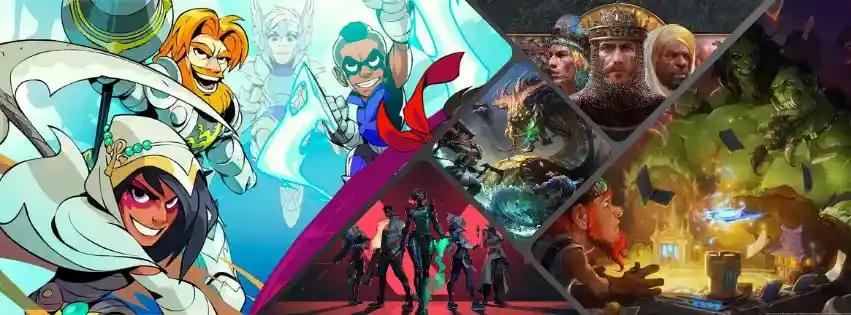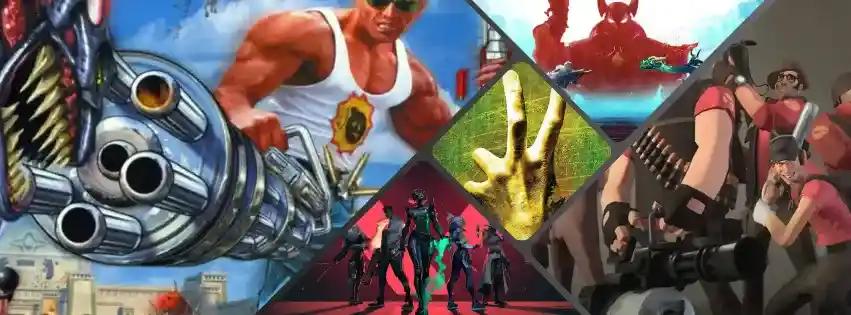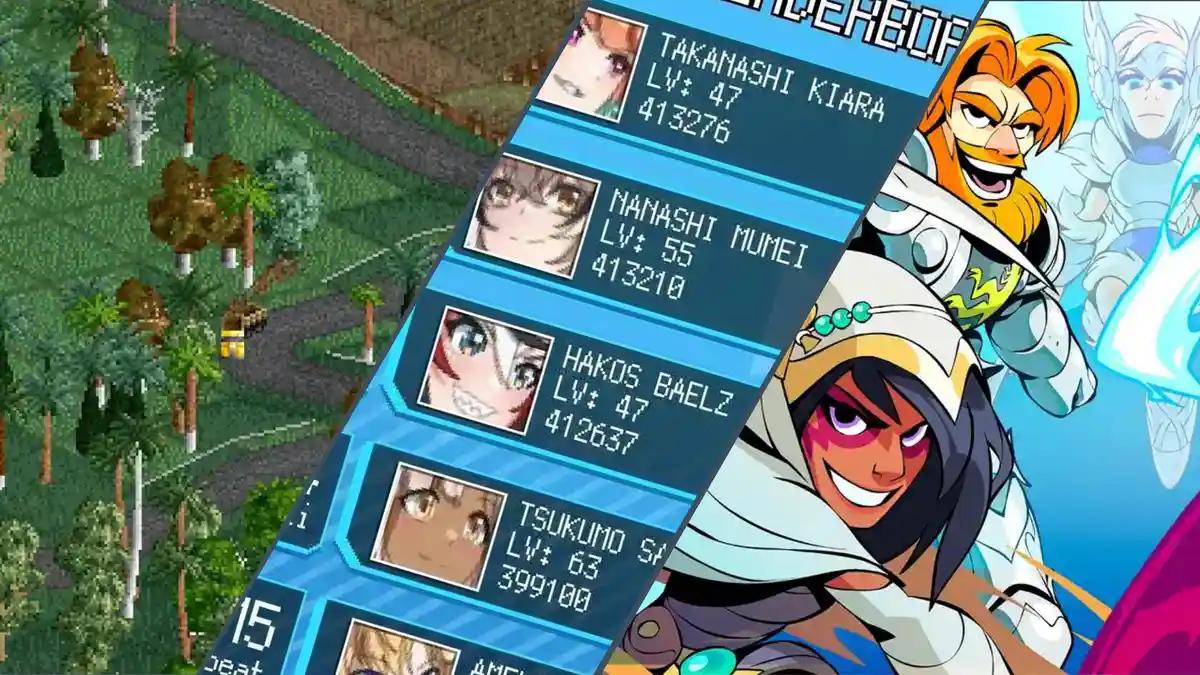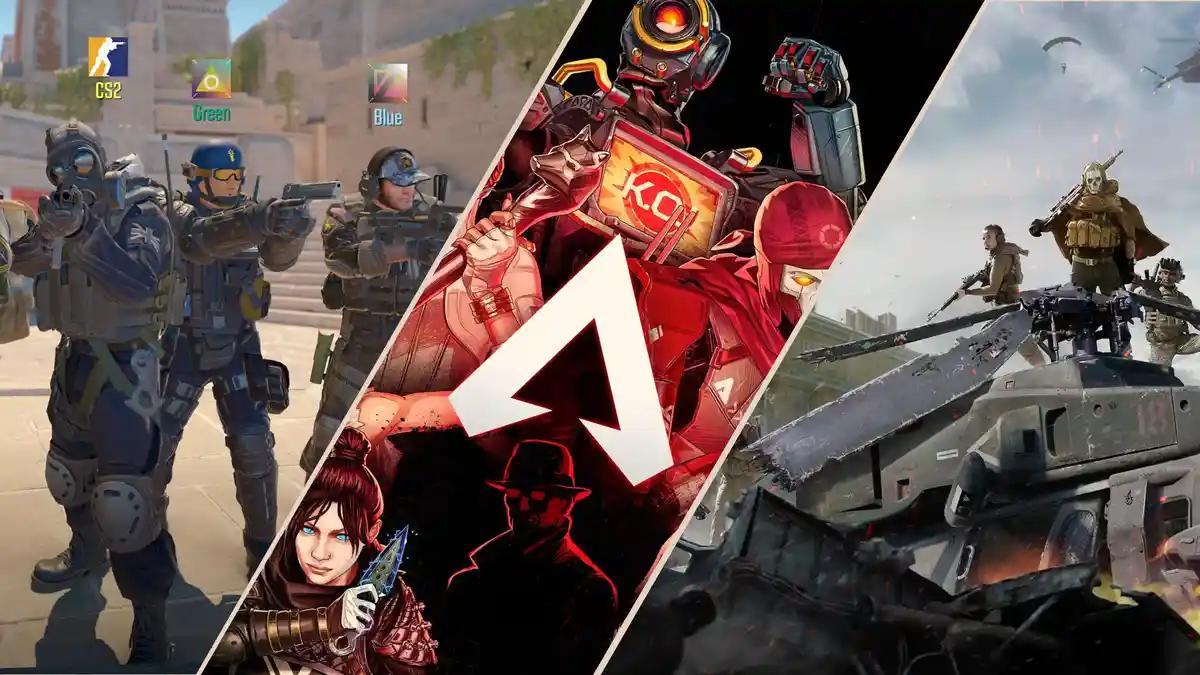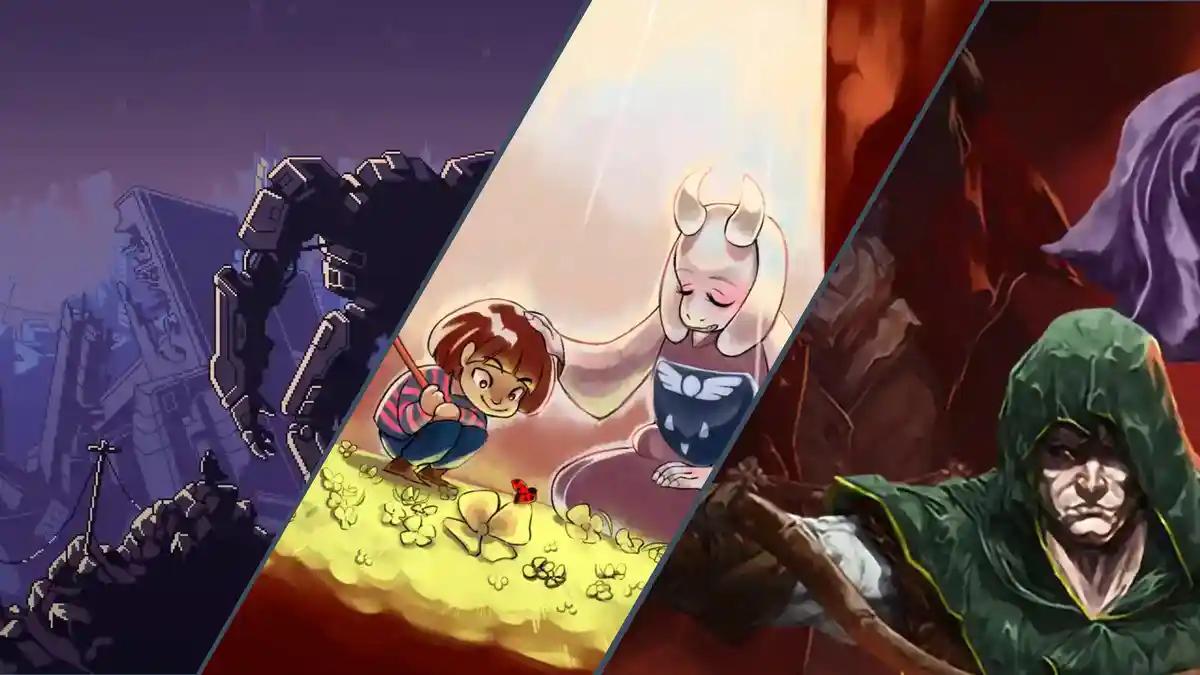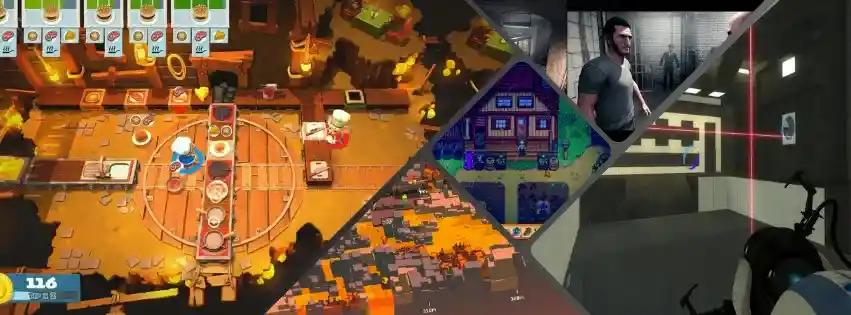You don't have to buy an expensive gaming PC or laptop to enjoy video games. This guide focuses on multiplayer games that run smoothly on older or low-spec PCs or laptops, without sacrificing match quality. We ranked titles using five factors: performance on modest hardware, online stability and matchmaking health, moment-to-moment fun, long-term replay value, and how easily new players can get started. You’ll find our top 10 picks, listed by rank, plus five honorable mentions that nearly made the cut. Expect concise recommendations for integrated graphics, small installs, and consistent queues—not marketing hype or unrealistic settings.
This article is part of our guide on the Best Low-End PC Games
How We Ranked These Games
We combined technical performance on low-end hardware with multiplayer health and usability. The table shows each factor and why it influenced placement.
Criterion | Weight | Why It Matters |
|---|---|---|
Low End Compatibility | 40% | Stable frame rates and small installs keep older PCs playable. |
Multiplayer Quality | 25% | Healthy populations, good netcode, and fair matchmaking ensure reliable games. |
Engagement Fun | 15% | Moment-to-moment enjoyment keeps you queuing for one more match. |
Replay Value | 10% | Modes, progression, and skill depth extend the game’s lifespan. |
Accessibility Onboarding | 10% | Clear tutorials and readable settings help new players ramp up faster. |
If you are looking for a dedicated co-op list, check out our guide: Top 10 Co-Op Games for Low-End Laptops
What do we mean with low-end hardware?
So what exactly do we mean when we say low-end hardware? We have to come up with a baseline somehow. To run the games we chose smoothly, make sure your laptop or pc matches at least the minimum specs:
Component | Minimum Requirement | Recommended |
|---|---|---|
CPU | Intel Core i3 / AMD Ryzen 3 (8th gen or newer) | Intel Core i5 / Ryzen 5 |
RAM | 8GB | 16GB |
Storage | 256GB SSD | 512GB SSD |
Graphics | Integrated (Intel UHD / AMD Vega) | Iris Xe or better |
Display | 1080p resolution | 1080p IPS panel |
OS | Windows 10 or 11 | Windows 11 |
The Top 10 Best Multiplayer Games for Low-End PCs and laptops
Starting with our number one choice, these picks balance performance on modest hardware with vibrant online play. Each entry is tuned for integrated graphics and lighter setups while still offering meaningful competitive or cooperative experiences.

Brawlhalla
“Platform fighter that runs on a calculator with rollback netcode”
Editors Take
Brawlhalla nails the brief for low-spec multiplayer. A tiny install, 2D visuals, and rollback netcode mean smooth 60+ FPS on aging laptops while still feeling responsive online. Cross-play and a large, active population keep queues instant, and weekly free legend rotations help newcomers try viable picks without spending. It’s free-to-play with cosmetics only, so performance and fairness aren’t gated behind purchases. Steam reviews repeatedly cite great performance on ancient hardware, and the pick-up-and-play structure keeps sessions light. It earns the top spot by excelling where it matters most for low-end rigs.
Full Details
Game Experience

Valorant
“Riot's tactical shooter built from the ground up for low-spec competitive play”
Editors Take
Valorant was engineered for competitive play on modest hardware, delivering 60–120 FPS on integrated graphics with the right settings. Riot’s server tech—128-tick with authoritative processing—keeps hit registration consistent, and the massive playerbase ensures stable matchmaking at all hours. It’s PC-only, but the queues and esports-grade netcode offset that limitation for our multiplayer focus. Tutorials, aim ranges, and short modes like Spike Rush smooth the learning curve, while full-length matches reward mastery. Community benchmarks regularly show playable performance on UHD-class iGPUs, which pushes it near the top for low-end competitive shooters.
Full Details
Game Experience

League of Legends
“The MOBA that runs on a toaster—if you can survive the learning curve”
Editors Take
League of Legends scales impressively on decade-old PCs, maintaining stable frame rates at low/medium settings while using very little bandwidth. That technical profile—plus huge regional servers—means fast queues and consistent match quality even on older laptops. Its depth gives it exceptional longevity, though the complexity and longer matches slow onboarding compared with lighter picks above it. Still, a refined client, robust tutorials, and a well-supported ranked ecosystem make it a strong choice for low-end hardware. It’s the MOBA standard-bearer for performance and population, and that combination secures a high placement.
Full Details
Game Experience

Team Fortress 2
“Valve's timeless class shooter that runs like butter on potato PCs”
Editors Take
Source engine optimization keeps Team Fortress 2 humming on ancient hardware, often 60+ FPS at 1080p low/medium with multicore rendering. A lightweight 12GB install and very low bandwidth needs help it fit on older drives and slower connections. The class system provides natural on-ramps for new players, while the thriving community sustains a variety of competitive and casual modes. Despite no official ranked ladder, active servers and 100K+ daily players preserve match variety and skill expression. PCGamingWiki and community reports routinely confirm smooth performance on Intel HD 4000 and newer, validating its low-end credentials.
Full Details
Game Experience

Old School RuneScape
“The MMO that runs on a calculator with two decades of content and 80K+ players”
Editors Take
Old School RuneScape is built for low power draw and tiny storage footprints, thriving on machines that struggle with modern 3D games. Its tick-based gameplay demands little from the GPU, while cross-platform support and a persistent 80K+ concurrency keep the world lively. The breadth of progression—skills, quests, raids, and PvP—translates into enormous longevity, and the free tier is genuinely playable. Membership expands content without raising performance demands. For low-end PCs, OSRS sets the bar for accessibility and replay, making it a natural fit in the top half of this list.
Full Details
Game Experience

Hearthstone
“Blizzard's accessible card game that runs on literally any PC from the last decade”
Editors Take
Hearthstone’s turn-based design and mobile-first optimization make it exceptionally forgiving on low-end PCs. It runs smoothly at high frame rates with a tiny install and minimal data use, yet still delivers polished online play and instant queues. Onboarding is strong thanks to tutorials and simple interactions, while Battlegrounds sidesteps collection barriers for a competitive option that doesn’t demand a deck. It loses ground to faster-paced titles on mechanical skill expression, but as a low-spec, widely available multiplayer pick with consistent population, it’s an easy inclusion in the top 10.
Full Details
Game Experience

Albion Online
“Cross-platform sandbox MMO built for potato PCs with thriving PvP scene”
Editors Take
Albion Online is purpose-built to scale down for cross-platform play, which benefits low-end PCs: a small client, clean visuals, and steady 60 FPS on iGPUs. The player-driven economy and full-loot PvP create meaningful stakes, while structured 5v5 content offers a ranked-adjacent competitive outlet. With 20K+ concurrent players, queues and markets stay healthy. It’s deeper and riskier than theme-park MMOs, so onboarding takes time, but its technical efficiency and flexible progression make it a standout sandbox choice for older hardware without sacrificing multiplayer impact.
Full Details
Game Experience

Krunker
“Browser-based voxel FPS that runs at 200 FPS on a toaster”
Editors Take
Krunker represents the ultra-lightweight FPS slot: it runs directly in a browser, hits high frame rates on very old machines, and keeps downloads to a minimum. Its simple voxel art helps guarantee performance, and accessible lobbies plus custom modes make finding games easy. With 10K+ concurrent players, it’s smaller than big-budget shooters but still supports healthy queues. The trade-off is thinner competitive infrastructure than top-tier tactical shooters. Still, for players on extremely constrained hardware, it’s hard to beat the combination of speed, responsiveness, and zero-friction access.
Full Details
Game Experience

Age of Empires II: Definitive Edition
“Classic RTS remastered for modern play—still runs on ancient hardware”
Editors Take
Age of Empires II: DE gives low-end players a deep RTS with modernized online play. It scales reliably to integrated graphics at 1080p low/medium, staying smooth for most of a match with only occasional late-game dips in large team battles. A long-standing ranked ladder, strong tournament scene, and deterministic netcode keep competition smooth and fair. While not the lightest game here, its balance of visual clarity, performance, and strategic depth makes it an excellent fit for older hardware, especially for 1v1 fans who want consistent match quality.
Full Details
Game Experience

Rocket League
“Car soccer that barely runs on integrated graphics—but still addictive”
Editors Take
Rocket League remains a standout multiplayer experience with excellent cross-play and evergreen skill expression. On low-end PCs, it’s playable at 720p performance presets on integrated graphics, though 50–70 FPS and occasional dips can hinder high-level consistency—especially in busy 3v3. The robust playerbase offsets that with quick matchmaking and broad playlist support. It lands at the bottom of the top 10 because performance is borderline for competitive standards and the launcher adds overhead, but it still offers accessible, addictive sessions for low-spec players willing to tune settings.
Full Details
Game Experience
Related reading: LAN Party Games: Best Titles for Local Multiplayer Gaming
Honorable Mentions
These games perform well on low-end PCs but miss the top 10 due to narrower communities, access constraints, or performance caveats. They’re still strong picks depending on your preferences.
TrackMania (2020)
Trackmania (2020) delivers silky frame rates on integrated graphics with a tiny footprint and time-trial competition that thrives even on weak CPUs. Always-on leaderboards and matchmaking keep you chasing PBs, and the driving model is readable at low settings. It narrowly misses the top 10 because the subscription structure complicates access—free players get rotating content while most social and club features sit behind paid tiers. For a low-end racing pick, it’s excellent, but the service model and niche competitive format place it just outside the main list.
Super Animal Royale
Super Animal Royale runs beautifully on very old hardware and offers a friendly on-ramp to battle royale thanks to clear 2D visuals and straightforward gunplay. Cross-play helps matchmaking, and seasonal content keeps the loop fresh. It misses the top 10 primarily due to a smaller playerbase that often relies on bots during off-peak hours, which weakens the quality of matches compared to heavier hitters. If you want a BR that truly runs on anything, this is a fun option—but its inconsistent lobbies hold it back.
Magic: The Gathering Arena
MTG Arena is technically friendly to low-end rigs, with smooth performance at 1080p and dependable netcode. It shines in strategic depth and ranked structure, but the economy is demanding: competitive decks require scarce wildcards and frequent rotations, creating real friction for new free-to-play players. Rules complexity is also higher than most digital card games. It narrowly misses our top 10 because those barriers slow onboarding and limit fair competition without significant grind or spending, even though the client itself is light and stable on older PCs.
Dota 2
Dota 2 offers unmatched strategic breadth and a massive playerbase, both positives for multiplayer quality and longevity. It scales down well enough, but big teamfights can drop frames on integrated graphics, and the learning curve is infamously steep. Those two factors—performance volatility on low-end CPUs/GPUs and punishing onboarding—push it out of the top 10 despite its strengths. For committed players with time to invest, it’s fantastic. For most low-spec users seeking smoother performance and gentler ramp-up, other MOBAs here are a better first stop.
StarCraft II: Wings of Liberty
StarCraft II still hosts a dedicated 1v1 ladder and remains a gold standard for competitive RTS design. However, it’s CPU-bound and often struggles to hold 60 FPS on entry-level processors, with late-game drops to 30–40 FPS. The 30GB install can also tax older storage. Those constraints make it less suitable for low-end PCs than AoE2:DE, which scales more gracefully and offers steadier performance. SC2 belongs on the radar for RTS purists willing to accept dips, but its hardware demands keep it as a late honorable mention.
Related reading: Best Free LAN Party Games for PC
Frequently Asked Questions
Here are quick answers to common questions about low-end PC multiplayer gaming, from performance tips to connection requirements.
What counts as a low-end PC for this list?
We prioritize systems with integrated graphics (e.g., Intel UHD/HD or Ryzen Vega), 4–8GB RAM, older dual/quad-core CPUs, and limited storage. If a game needs discrete GPUs or large installs to be enjoyable, it ranked lower or was excluded.
How can I improve performance on integrated graphics?
Lower resolution (720p–900p), set textures/shadows to low, cap FPS, disable motion blur and ambient occlusion, and use up-to-date graphics drivers. Close background apps and consider enabling resolution scaling or windowed fullscreen for stability.
Do these games work with controllers?
Many do, but support varies. Action titles like Rocket League and Brawlhalla play great on controllers. Tactical shooters and MOBAs are generally best with mouse/keyboard. Check each game’s input options in the client settings.
How much internet bandwidth do I need?
Most listed games work well on 5–10 Mbps connections with low jitter. Turn-based titles and card games need far less. Latency matters more than raw speed—use wired connections or sit close to your router for Wi‑Fi.
Are these games free-to-play?
Several are fully free with cosmetic monetization (e.g., Brawlhalla, TF2) or have generous free modes (Hearthstone’s Battlegrounds). Others use subscriptions or storefronts; we note any access friction in each entry’s commentary.
Why is CS:GO not included?
While Counter-Strike: Global Offensive runs perfectly on modest hardware, and has been a staple of multiplayer gaming for many years, after the release of CS2, its availability has been unsure. There are still ways to play CS:GO but only on community service. It has effectively been replaced by CS2, which has higher hardware demands, and therefore did not make this list.
Conclusion
Low-spec multiplayer doesn’t have to mean compromise. The games above emphasize reliable frame rates, healthy matchmaking, and clean onboarding so older machines can still deliver meaningful competition and social play. Whether you want a fast queue, a deep ranked ladder, or a low-bandwidth time sink, these picks cover a wide range of tastes without overtaxing your system. Revisit settings as your hardware changes, and keep drivers updated for the best results. Ready for more tailored picks? Try our Recommendations Engine for suggestions that match your play style.
